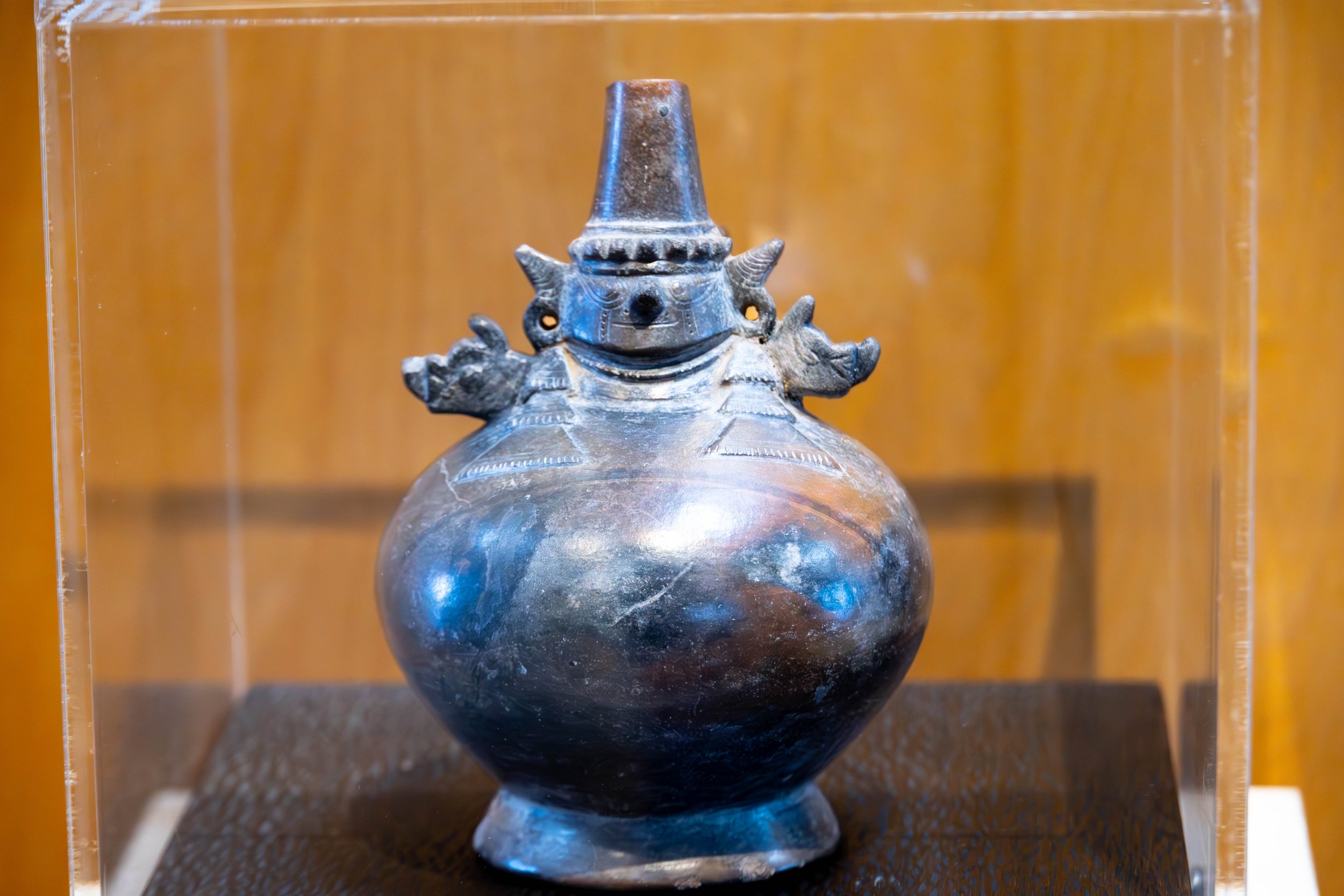Ancient Deity Vessel
1978.4.14 Museum Purchase
Amanda Kramp, Assistant Curator of Collections and Exhibits
This ancient deity vessel has intrigued me for a long time. I first came across it in 2016 while curating Adventures in pre-Columbian Archaeology for the Glass Case in the Museum. At the time, museum records stated it was from about c.800-1200 CE Peru. The cultural affiliation listed was “Moche and Cerra Blanca, Chancay,” the piece was “found near present-day Trujillo on the Peruvian coast,” and “this is the deity figure representing the Chimu god who later dominated the Kingdom of Chimor.
Upon further research, I was able to expand on the original information. However, pre-Columbian ceramics can be difficult to study since very few pieces have archaeological provenience (an object’s location in time and space at archaeological discovery) or detailed provenance (an item’s history of ownership). Both of these are imperative for a scholar researching an artifact or piece of art. The little that was in the records was good, but not enough. Beyond the records, we can make inferences by comparing the piece with known museum objects. Nearly identical vessels in the Brooklyn Museum and The MET are labeled as Lambayeque/Sican, and luckily, the figure represented is a ubiquitous and well-known deity. However, it is interesting that though our artifact looks like these other two museum objects, it was “found” in Chimu territory in an area never occupied by the Sican.
The form and style of this vessel are consistent with those from the ancient north coast of Peru, tending more towards Sican or Chimu cultures than Moche. The Sican (named by archaeologist Izumi Shimada, meaning “temple of the moon”), or Lambayeque, occupied a relatively small coastal pocket near the Lambayeque River between about 750 and 1375 CE. Some archaeologists group them with the Moche, while others consider them a distinct culture. The Chimu Empire, or Chimor, arose around 900 CE, expanding along the coast and eventually conquering Sican in 1375. The Chimu, in turn, were conquered by the Inca around 1470 CE.
It is worth noting that its inhabitants don’t just disappear when a civilization collapses. Some archaeologists believe many Sican artists relocated to the ancient city of Chan Chan, a cultural center of Chimor located only a few miles west of modern Trujillo. Cultural transmission between the two cultures can be seen in ceramic styles, decorative elements, and iconography.
The figure on this vessel is a recurring representation of an ancient deity known as Naylamp to the Sican or Tacaynamo to the Chimu. Both cultures have a similar legend: Naylamp/Tacaynamo arrives in the respective region from the sea on a balsa raft to establish civilization. In the Chimu version, he is accompanied by warriors, concubines, and servants. Over time, his descendants conquered surrounding territories, creating new cities and thus expanding the empire. In the Sican version, the people lived peacefully during Naylamp’s long reign. He was such a beloved figure that his attendants kept his death a secret, and the legend became Naylamp sprouted wings and flew away. When his followers discovered his mysterious disappearance, they were saddened and abandoned their homes to find him.
Come to the Museum for a rare opportunity to see this ancient artifact in person and to learn more about these fascinating cultures and their material culture.






